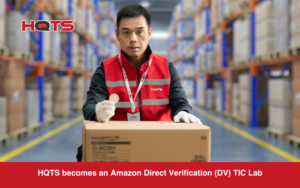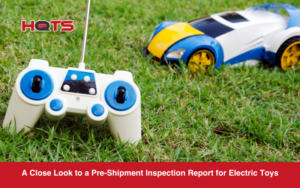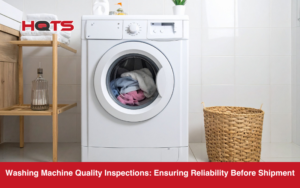HQTS recently interviews Steven Andrews, a RoHS environmental expert about Trends, Regulations and explains any of the latest updates regarding the Electrical and Electronics industry.
Steven works for Assent Compliance, based in Canada, but has global locations in Europe, Malaysia, Africa. They are a software and solutions company, allowing companies to contact their supply chains to build up all the necessary data to declare compliance with all the relevant product legislation across Europe and North America. For many years, Steven worked on these issues for the UK Government within the department for environment, food, and rural affairs, he left in 2019 and joined Assent in 2019, and he is now an expert within this field for Assent Compliance.
HQTS: In your opinion, how is the electronics industry changing in terms of technology operations and business models in recent years?
Steven: Obviously, the development of the technology industry over the past 50 plus years has been one of the continuous changes in terms of innovation and also alongside a constant challenge. It has had a tremendous impact on the lives of everyone on the planet, from those living in the most densely populated cities to those living in the most remote locations. The IT industry plays an essential role within virtually every industrial sector, from manufacturing household consumer equipment to those in communications to those in transport, particularly appropriate healthcare.
Therefore, it is almost impossible now to imagine a world without electronic devices. The Internet of Things now makes those sectors interdependent and relies on each other to a degree never before imagined. The Global Electronics Components Market research report in 2020 suggests that the global market for electronic components will grow at a compound annual growth rate of almost 5% between 2020 and 2025 and is expected to reach around 500 million US dollars by 2025.
HQTS: Could you summarize some of the critical points that suppliers and retailers need to know about the RoHS directive targets?
Steven: I have worked on this directive since the original directive was agreed in 2002. I negotiated the RoHS for the UK government with my colleagues within the EU commission. The RoHS directive is now 18 years old. The second RoHS directive placed an obligation on the EU commission to undertake a general review of its effectiveness alongside a need to examine its scope and product coverage. The latest one was published in March this year. Five key issues were addressed; whether the directive was effective, relevant, did it have coherence with other legislations, efficiency, and did it have EU added value.
The study found a reduction of around 67 in the levels of hazardous substances used in the manufacture of electrical equipment since 2002. The report also suggested that the directive needed to be more flexible in responding to new issues that are coherent with how RoHS fits in with other EU legislation such as the REACH regulation, the Eco-design directive, and the persistent organic pollutants directive.
There will also be a new third directive, a directive, of course, that has to be turned into the local laws of each country, but this is an EU regulation that applies directly and across all the member states. This will be more harmonized, and the same substances will come up for consideration under both parts of legislation. Finally, there will be a review of the exemption to the technical processes, where you’re allowed to use some of those substances above the maximum concentration values. A new exemption methodology was published in June last year, but there have been issues around timelines for approvals. The first proposals were due by the end of July, but they have been postponed until next year.
HQTS: How can companies comply with regulations about electronics and electrical waste (e-waste)?
Steven: The RoHS directive was also negotiated simultaneously and proposed as the associated waste electrical equipment directive. They used to be one big directive under the proposals, and then there were separated because it was such a big issue to try to tackle. The end of life for waste electrical and electronic equipment directive was negotiated separately, whilst the RoHS directive, which looks at the original manufacturing of the same products, became a different piece of legislation, and the WEEE directive is what we call in Europe a minimum requirements directive, which is not a single market directive like RoHS. Meaning, all the 27 EU member states must implement and enforce all their requirements, but unlike RoHS, they can impose stricter obligations if they want to, so they can go beyond those minimum requirements.
Compared to the WEEE directive, which is all about producer responsibility and arises from the principle that those that place products and equipment onto the market should take full responsibility for how those products are disposed of and recycled at the end-of-life disposal stage. Therefore, companies are usually required to contribute to a country or region’s waste management infrastructure or at least collect and dispose of electrical goods. This can be done through membership in a state-run or private company scheme. However, the main objective of the WEEE directive is to minimize the environmental impact electrical and electronic goods have and aim to promote efficient use of resources. Recycling and other forms of recovery are promoted and encouraged by the directive. In addition, companies must put a crossed-out wheelie bin on the products or equipment that they sell or distribute and that all information is freely available on the correct treatment of reprocessing of all electrical and electronic components and materials. They must also make sure that their distributors or retailers pass on that information about recycling and disposal options to the consumers and other end-users. Finally, they must keep the documentation related to the products for inspection by the national authorities whenever necessary for up to 10 years after the product is placed on the market.
HQTS: In your opinion, can retailers and distributors minimize counterfeiting and ensure the products they buy from suppliers are actually what they claim to be?
Steven: counterfeiting is widespread not only in Europe but across the globe. It is estimated that counterfeit trading goods account for nearly 5% of total world trade, a considerable amount of business being lost to legitimate companies. Therefore, it’s no surprise to know that the more successful the brand, the more likely it is to find itself the target of counterfeiting. But, it’s not only final goods that might be counterfeit; companies can also fall victim, when purchasing parts, components, and sub-assemblies to incorporate within their products, which can cause problems with failures and products not being up to the proper standard.
So how can suppliers, distributors, and other players in the supply chain play their part to minimize this threat? The first action is to ensure that the trademark or patent of any product is in place. It needs to be in place on a regional basis where you’re selling the goods and on a global basis because counterfeiting is done outside those markets. Secondly, documentation needs to be scrutinized very carefully. If the supplier has been working with those retailers, manufacturers, and distributors on a long-term and regular basis, it can be reasonably assumed that they are trusted in what they are supplying is what they are supposed to be supplying. If you are using someone new, you need to be careful monitoring suppliers closely and undertaking regular audits, which are essential.
The next point is technology marks to show the authenticity of a product or a component part can be used to show the validity of the product’s legal status and finally, you need to have a crisis management plan in place so that if any counterfeiting does arise, you can combat it successfully, minimizing the damage and avoiding the reputational impact.
HQTS: What is the role of supply chain data management, and how is it applied in the electrical and electronics industry?
Steven: This is where a company like Assent Compliance and other people in the same field can help because supply chains run deep in the electrical and electronics industry. Complying to standards is crucial for continuity within a supply chain. Supply chain data management is vitally important for all manufacturing sectors, particularly where products related to legislation apply. But, unfortunately, the management of supply chain data is a massive undertaking that can disrupt the responsibilities of employees across the company; it can also disrupt the day-to-day work of logistics partners, distributors, retailers, and, of course, the end-users. According to the 2020 state of the compliance report, 88 companies expected to spend more time and money on compliance over the next three years, more than they ever had done before. As a result, many companies, particularly in the electrical and electronics industry, have begun to look outside their organizations for support, and more and more are choosing to engage with chain data management partners, which can help take on some of the responsibility of managing their product compliance, their social responsibility, and their vendor management programs, from identifying products in scope and providing regulatory guidance, to managing their supplier outreach and submitting data, to regulatory bodies – which is particularly important at the moment with the development in Europe with the database that’s managed for the EU Commission by the EU Chemicals Agency.
Therefore, allowing another company to do this gives the company time to reassign their internal resources whilst still being confident that they can meet requests for compliance information from any enforcement body that may come knocking on the door and, indeed, from their customers up and down their supply chain.
Download Interview Presentation




